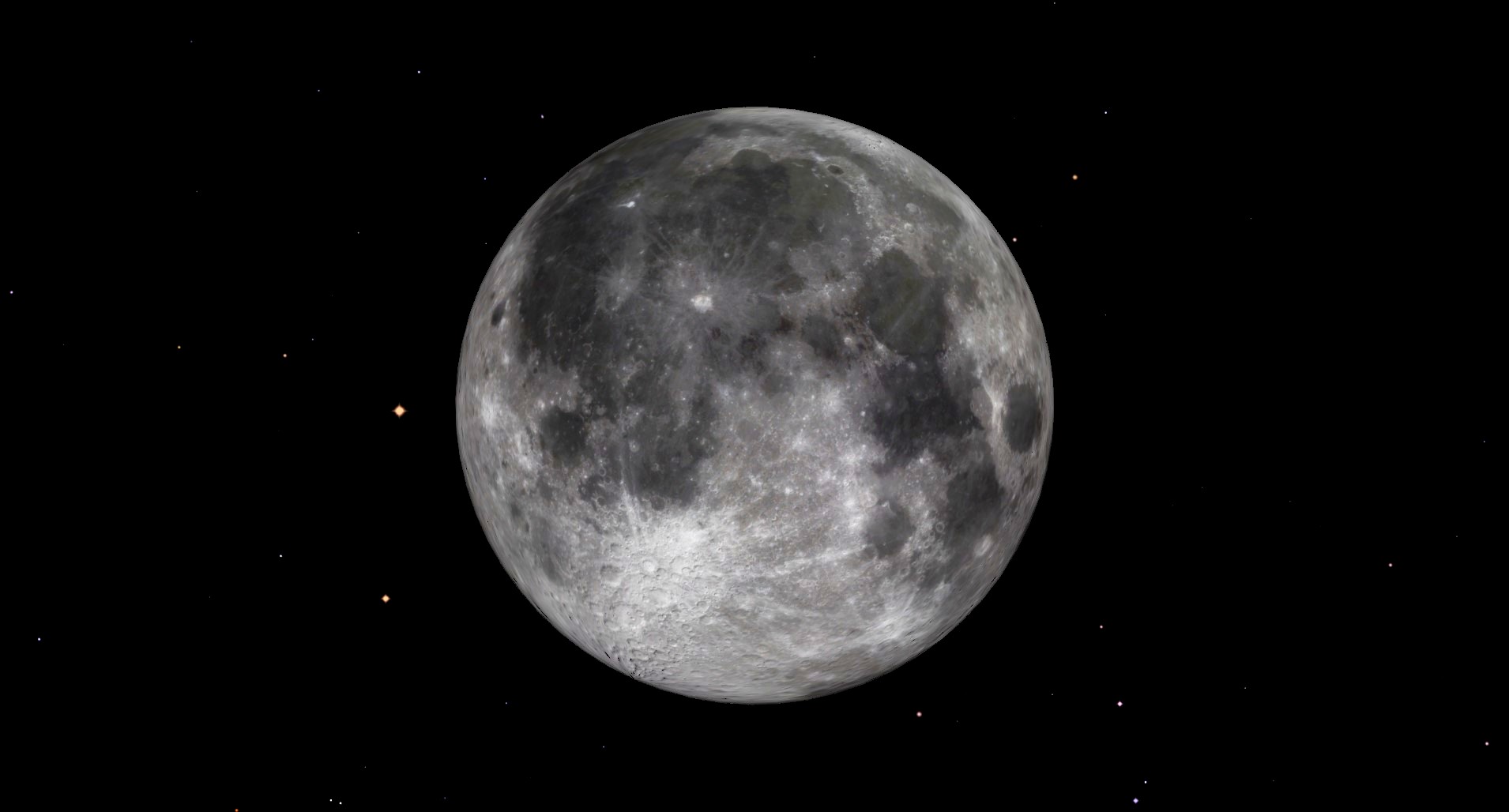Watch the Full Worm Moon rise in free telescope webcast on March 7

Update for March 7: Today's webcast of March's Full Worm Moon has been canceled due to weather.
You can catch the Full Worm Moon rise in a free webcast.
The full moon of March will peak in the eastern U.S. at 7:40 p.m. (1240 UTC) on March 7, according to the U.S. Naval Observatory. The moon will be in the constellation Virgo and will be visible in the webcast via a robotic telescope.
Joining the moon in the night sky will be Venus, Jupiter, and Mars. Venus and Jupiter just completed their closest approach in a decade, but are still within very close quarters of each other in our night sky. Jupiter will be in the west with brighter Venus above, while Mars will glow red-orange in the southwest.
The Virtual Telescope project will show the Full Worm Moon shining over Rome on Tuesday (March 7) at 1:30 p.m. EST (1830 GMT). You can watch live via the project's website or YouTube channel.
Related: March full moon 2023: The Worm Moon shares the sky with Venus, Jupiter and Mars

Looking for a telescope to see the features of the full moon up close? We recommend the Celestron Astro Fi 102 as the top pick in our best beginner's telescope guide. Don't forget a moon filter!
The Worm Moon is so-called in the Old Farmer's Almanac and is said to be because earthworms are starting to emerge in March. However, numerous other cultures in the Americas and around the world have other names for it; you can see a selection of other cultures' monikers and meanings in our Worm Moon story.
Get the Space.com Newsletter
Breaking space news, the latest updates on rocket launches, skywatching events and more!
If you're looking for a telescope or binoculars to observe the moon, our guides for the best binoculars deals and the best telescope deals now can help. Our best cameras for astrophotography and best lenses for astrophotography can also help you prepare to capture the next skywatching sight on your own.
Fancy taking a more in-depth moonlit tour of our rocky companion? Our ultimate guide to observing the moon will help you plan your next skywatching venture whether it be exploring the lunar seas, mountainous terrain, or the many craters that blanket the landscape. You can also see where astronauts, rovers and landers have ventured with our Apollo landing sites observing guide.
Editor's Note: If you snap a photo of the Full Worm Moon and would like to share it with Space.com's readers, send your photo(s), comments, and your name and location to spacephotos@space.com.
Elizabeth Howell is the co-author of "Why Am I Taller?" (ECW Press, 2022; with Canadian astronaut Dave Williams), a book about space medicine. Follow her on Twitter @howellspace. Follow us on Twitter @Spacedotcom or Facebook.
Join our Space Forums to keep talking space on the latest missions, night sky and more! And if you have a news tip, correction or comment, let us know at: community@space.com.

Elizabeth Howell (she/her), Ph.D., was a staff writer in the spaceflight channel between 2022 and 2024 specializing in Canadian space news. She was contributing writer for Space.com for 10 years from 2012 to 2024. Elizabeth's reporting includes multiple exclusives with the White House, leading world coverage about a lost-and-found space tomato on the International Space Station, witnessing five human spaceflight launches on two continents, flying parabolic, working inside a spacesuit, and participating in a simulated Mars mission. Her latest book, "Why Am I Taller?" (ECW Press, 2022) is co-written with astronaut Dave Williams.
-
rod I enjoyed some lunar observing last evening with an almost Full Moon :)Reply
Observed 1800-1930 EST. Sunset 1803 EST, Full Moon 07-Mar-2023 1240 UT. I enjoyed telescope views of the waxing gibbous Moon and Eta Leonis tonight at 25x. Near 1811 EST, Stellarium 1.2 showed the pair about 17 arcminutes apart, later near 1930 EST about 47 arcminutes apart. Viewing like this shows the Moon's faster orbital velocity in Leo tonight compared to Earth's rotation as the Moon and Eta Leonis rose. Eta Leonis position near the NE quadrant of the Moon’s limb, Mare Crisium visible. I also enjoyed some views of Mars in Taurus at 111x. Nothing special but the planet as a planetary shape and gibbous phase quite distinct near 8 arcsecond angular size. Stellarium 1.2 shows Mars 89.8% illuminated. As I observed, more cirrus clouds moved in near 1930 EST, so I decided to come inside for the evening. I used my 90-mm refractor telescope with TeleVue 40-mm plossl and TeleVue 9-mm Nagler eyepieces. Skies initially mostly clear, then cirrus bands moved in. Temperature 9C, winds NW/5 knots.









